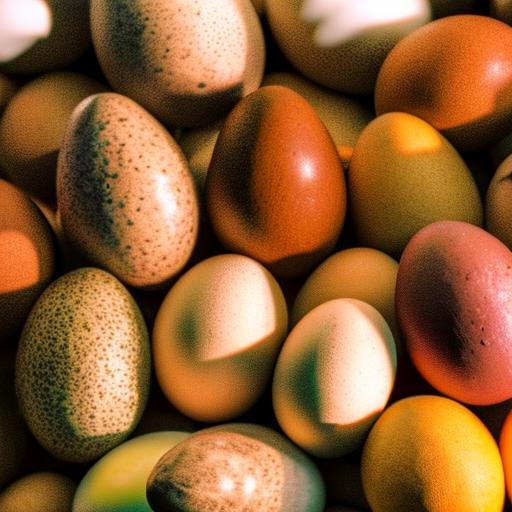Cross breeding in chickens is the deliberate mating of two distinct chicken breeds to produce offspring that inherit beneficial traits from both parent breeds. This technique is widely employed in commercial poultry production to enhance the overall quality and performance of chicken populations. Through strategic selection of parent breeds, poultry producers can develop hybrid chickens that combine advantageous characteristics such as improved disease resistance, increased egg production, superior meat quality, and desirable behavioral traits.
The process of cross breeding is intricate and necessitates a comprehensive understanding of chicken genetics and breed-specific attributes. It involves meticulous planning and selection of parent breeds to ensure the transmission of desired traits to the offspring. Furthermore, cross breeding programs require rigorous monitoring and detailed record-keeping to evaluate outcomes and inform future breeding decisions.
Successful implementation of cross breeding strategies can lead to significant improvements in poultry production efficiency, product quality, and overall flock health. However, it is essential to consider potential drawbacks, such as the loss of purebred genetic diversity and the need for ongoing breeding programs to maintain hybrid vigor in subsequent generations.
Table of Contents
- 1 The Importance of Genetic Diversity in Poultry
- 2 How to Create a Cross Breeding Chart for Chickens
- 3 The Benefits of Cross Breeding in Poultry Production
- 4 Common Cross Breeding Methods for Chickens
- 5 Using a PDF Chart for Tracking Cross Breeding Results
- 6 Tips for Successful Cross Breeding in Chickens
- 7 FAQs
Key Takeaways
- Cross breeding in chickens involves mating different breeds to create offspring with desirable traits
- Genetic diversity in poultry is important for disease resistance and overall health of the flock
- Creating a cross breeding chart for chickens involves documenting the parent breeds and desired traits
- Cross breeding in poultry production can result in improved growth rates, egg production, and overall health
- Common cross breeding methods for chickens include outcrossing, inbreeding, and line breeding
The Importance of Genetic Diversity in Poultry
Reducing the Risk of Inbreeding
Genetic diversity also reduces the risk of inbreeding, which can lead to health issues and decreased productivity in the flock. Inbreeding can have severe consequences, including reduced fertility, increased mortality rates, and decreased growth rates.
Adapting to Changing Environmental Conditions
Furthermore, genetic diversity enables poultry farmers to adapt to changing environmental conditions and market demands. By creating hybrid chickens with a diverse range of traits, farmers can ensure that their flocks are better equipped to thrive in different climates and meet the needs of various consumer preferences.
Long-term Sustainability and Success
Overall, genetic diversity plays a critical role in the long-term sustainability and success of poultry production. By maintaining a diverse gene pool, poultry farmers can ensure the continued health and productivity of their flocks, ultimately leading to a more sustainable and successful poultry industry.
How to Create a Cross Breeding Chart for Chickens

Creating a cross breeding chart for chickens is an essential tool for poultry farmers to track the results of their breeding programs and make informed decisions for future breeding. To create a cross breeding chart, farmers should start by identifying the parent breeds and the specific traits they want to improve in their flock. They should then carefully select the mating pairs and record the details of each cross breeding event, including the date, parent breeds, and the traits they hope to pass on to the offspring.
Once the offspring are hatched, farmers should continue to monitor and record their growth, development, and performance. This information can then be used to evaluate the success of the cross breeding program and make adjustments for future breeding cycles. By maintaining a detailed cross breeding chart, poultry farmers can track the genetic progress of their flock and make informed decisions to achieve their breeding goals.
The Benefits of Cross Breeding in Poultry Production
Cross breeding in poultry production offers a wide range of benefits for farmers. One of the primary benefits is the ability to create hybrid chickens with improved traits such as disease resistance, egg production, meat quality, and temperament. By carefully selecting the parent breeds, farmers can create offspring that exhibit the best characteristics of each breed, leading to a more productive and resilient flock.
Additionally, cross breeding can help to reduce the risk of inbreeding and maintain genetic diversity within the flock. This can lead to healthier chickens with a lower risk of genetic disorders and improved overall productivity. Furthermore, cross breeding allows farmers to adapt to changing market demands by creating hybrid chickens with a diverse range of traits that appeal to different consumer preferences.
Overall, cross breeding in poultry production offers numerous benefits that can help farmers improve the quality and sustainability of their flocks.
Common Cross Breeding Methods for Chickens
There are several common cross breeding methods used in poultry production to create hybrid chickens with desirable traits. One method is known as “inbreeding,” which involves mating closely related chickens within the same breed to reinforce specific traits. While inbreeding can be effective in fixing desirable traits within a breed, it also carries a higher risk of genetic disorders and reduced overall fitness.
Another common method is “outbreeding,” which involves mating chickens from different breeds to introduce new genetic material and improve overall genetic diversity. This method can help farmers create hybrid chickens with a diverse range of traits that are well-suited to different environmental conditions and market demands. Additionally, “line breeding” is a method that involves mating chickens from the same breed but with some degree of genetic distance to maintain specific traits while reducing the risk of inbreeding.
Using a PDF Chart for Tracking Cross Breeding Results

Organizing Breeding Data
A PDF chart allows farmers to easily input and store information about each cross breeding event, including details such as parent breeds, mating pairs, date of mating, and specific traits being targeted. This information can then be used to track the progress of the offspring and evaluate the success of the cross breeding program.
Collaboration and Decision-Making
Furthermore, a PDF chart can be easily shared and distributed among farm workers and stakeholders, allowing for better collaboration and decision-making based on accurate and up-to-date breeding data.
Long-Term Record Keeping
Additionally, PDF charts can be easily printed and stored for future reference, providing a valuable record of the genetic progress of the flock over time. Overall, using a PDF chart for tracking cross breeding results can help poultry farmers make informed decisions and improve the overall quality and productivity of their flocks.
Tips for Successful Cross Breeding in Chickens
There are several tips that can help poultry farmers achieve successful cross breeding results in their flocks. Firstly, it is important to carefully select the parent breeds based on the specific traits that are desired in the offspring. Farmers should also pay attention to the health and genetic background of the parent breeds to ensure that they are suitable for cross breeding.
Additionally, it is important to maintain detailed records of each cross breeding event, including the date, parent breeds, and specific traits being targeted. This information can help farmers track the progress of the offspring and make informed decisions for future breeding cycles. Furthermore, it is important to monitor the growth, development, and performance of the offspring to evaluate the success of the cross breeding program.
Finally, it is important for poultry farmers to seek advice from experienced breeders or geneticists who can provide valuable insights and guidance on successful cross breeding practices. By following these tips, poultry farmers can improve the overall quality and productivity of their flocks through successful cross breeding programs.
If you’re interested in learning more about the different types of chicken coops, check out this article on A-Frame Chicken Coops. It provides valuable information on the benefits and features of this particular style of coop, which can be helpful when considering the best environment for cross breeding chickens.
FAQs
What is cross breeding in chickens?
Cross breeding in chickens refers to the practice of mating chickens from different breeds in order to produce offspring with specific desired traits. This can include traits such as egg production, meat quality, or resistance to disease.
What are the benefits of cross breeding chickens?
Cross breeding chickens can result in offspring that exhibit hybrid vigor, meaning they are often healthier and more productive than purebred chickens. This can lead to increased egg production, better meat quality, and improved resistance to disease.
How is cross breeding in chickens typically done?
Cross breeding in chickens is typically done by selecting parent chickens with desired traits and mating them to produce offspring with a combination of those traits. This can involve carefully selecting specific breeds to mate in order to achieve the desired results.
Where can I find a cross breeding chickens chart in PDF format?
There are various resources available online where you can find cross breeding chickens charts in PDF format. These charts typically outline the potential outcomes of mating different chicken breeds and can be useful for breeders looking to achieve specific results in their flocks.
Meet Walter, the feathered-friend fanatic of Florida! Nestled in the sunshine state, Walter struts through life with his feathered companions, clucking his way to happiness. With a coop that’s fancier than a five-star hotel, he’s the Don Juan of the chicken world. When he’s not teaching his hens to do the cha-cha, you’ll find him in a heated debate with his prized rooster, Sir Clucks-a-Lot. Walter’s poultry passion is no yolk; he’s the sunny-side-up guy you never knew you needed in your flock of friends!







